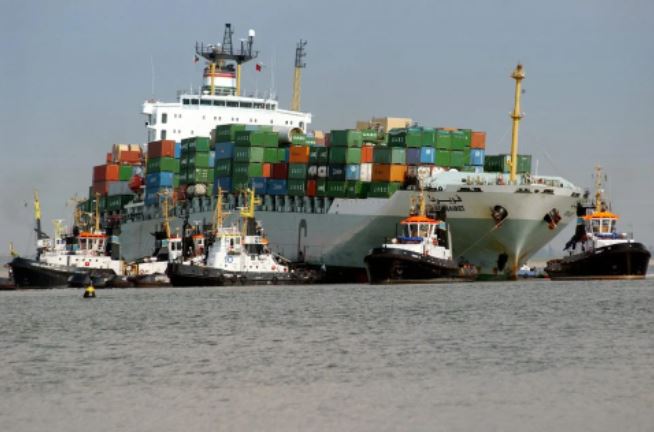Not simply the stuff of childhood fables, a whirlpool dubbed "the little devil in the water" has caused severe disruptions to shipping traffic around Antwerp port after appearing at a bend in the Westerschelde river.
The phenomenon occurs a few times each year but can be very powerful: in 2005 it caused a 276-metre long container ship carrying some 2,000 containers to run aground on a sandbank in the so-called Zuidergat near the Dutch village of Perkpolder.
Remarkably, this incident didn't happen during low tide but during spring tide when the high waters are even higher than average. That made it more difficult to free the ship, all the more so because it was in danger of breaking in two.
A subsequent investigation by the Dutch Maritime Court showed that the ship did not suffer a technical breakdown, there was very little wind, and the visibility was also good. In fact, an unexpected cross current pulled water in the complete opposite direction, forcing the ship off-course and onto a sandbank.
"That incident made a lot of people think," a river pilot who has been sailing on the Scheldt for almost 10 years told Gazet van Antwerpen. "Before 2005, the skippers of the ferries knew that something was going on there, but the rest of the shipping world didn't believe it."
Earth, sun and moon
This "devil in the water," as the pilots have come to call the phenomenon, happens because the channel of the Westerschelde makes a 180-degree bend near the Dutch village of Hansweert, according to Yves Plancke, research engineer for the Hydraulic Laboratory of the Flemish Department of Mobility and Public Works.
"In this bend, there are sandbanks, which rise at low tide and overflow when the water level rises," he told a local newspaper. "The difference in current speeds and water levels can create a strong cross-current that reverses further downstream."
Related News
That effect is greatest during a so-called Perigean spring tide: a spring tide that is amplified by the position of the earth, sun and moon, Plancke explained. Under these conditions, a whirlpool then forms a spiral with a diameter of about 1.5 kilometres.
'Go with the flow'
When you are caught in it, it is better to not do too much and just "go with the flow as much as possible" – even if it feels counterintuitive. "If you compensate too quickly and steer against the current, you get into trouble on the other side of the spiral. Doing nothing is better."
Unlike in 2005, skippers who pass the Zuidergat today receive a warning at times of strong current, and the vessel traffic services make sure that not too much shipping traffic passes the whirlpool at the most difficult moments.
To better monitor the current, a high-frequency radar will now be used. "At three places along the area of interest, antennae will be installed this summer," said Plancke.
"These antennae will send data about the current to the traffic control centre and the pilots every one to two minutes," he added. "The radar system has the great advantage of being able to map the current over the entire area."
As soon as the radar system is operational, the Hydraulic Laboratory can use the data to improve its computer models; pilots can then use those model results in their simulators.

